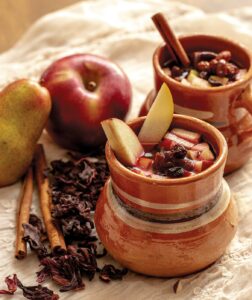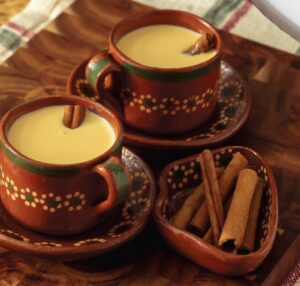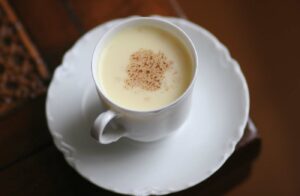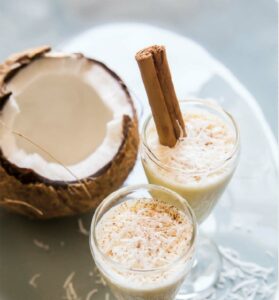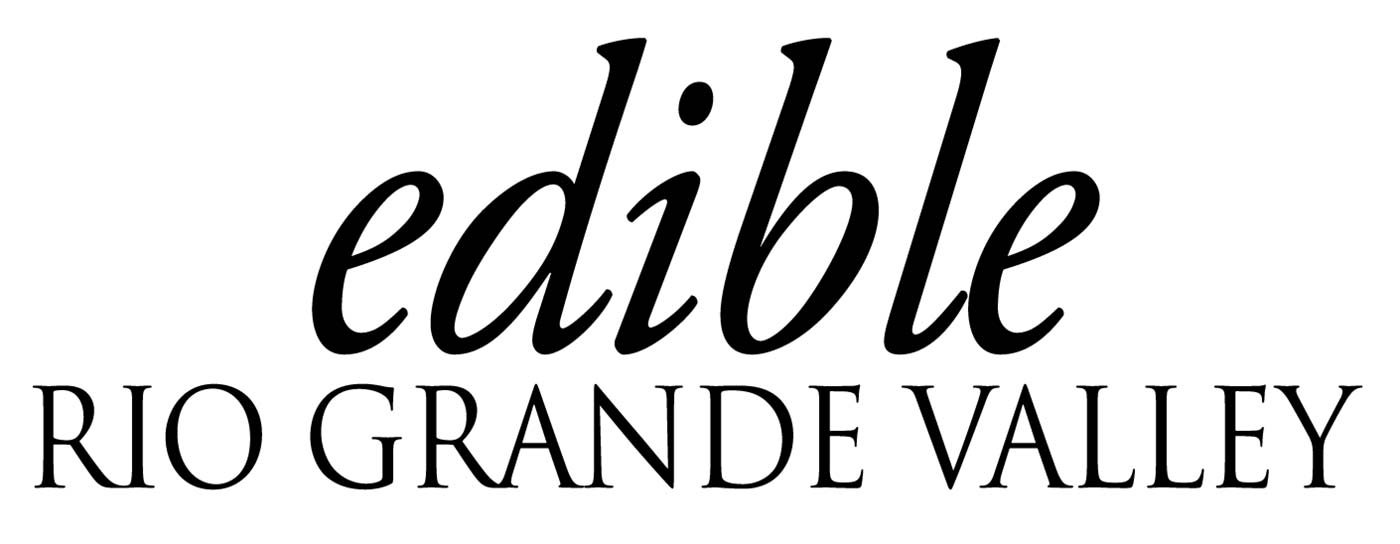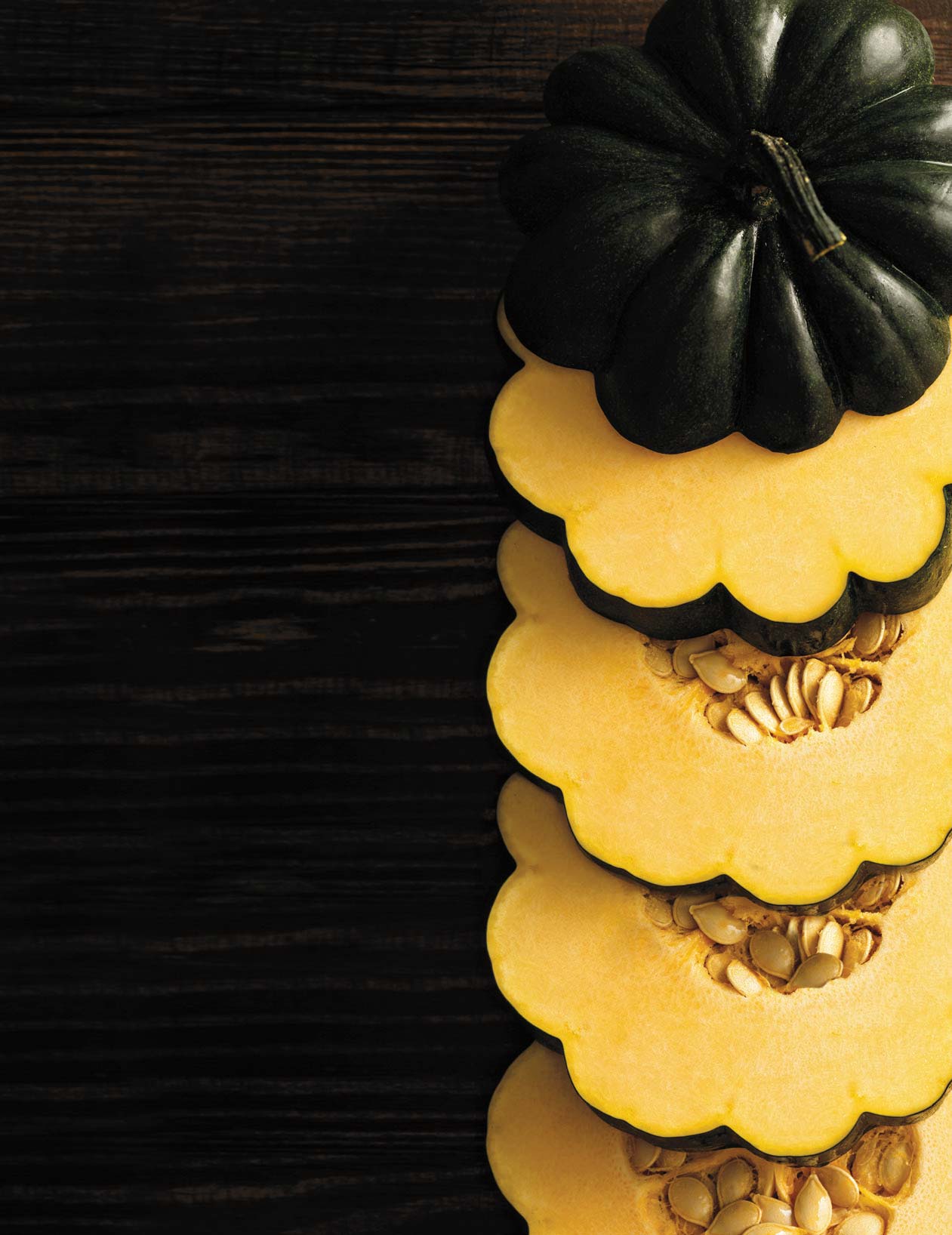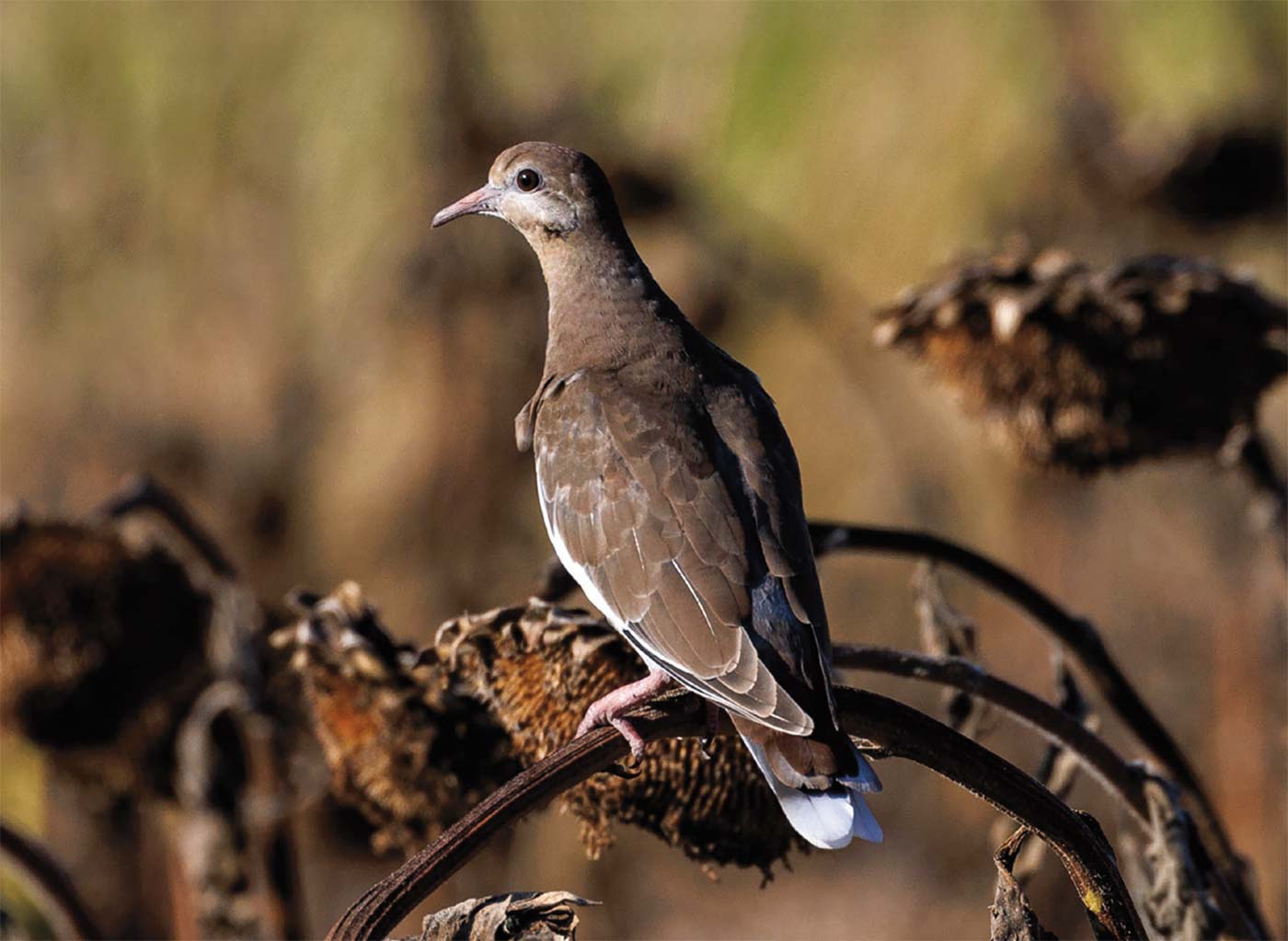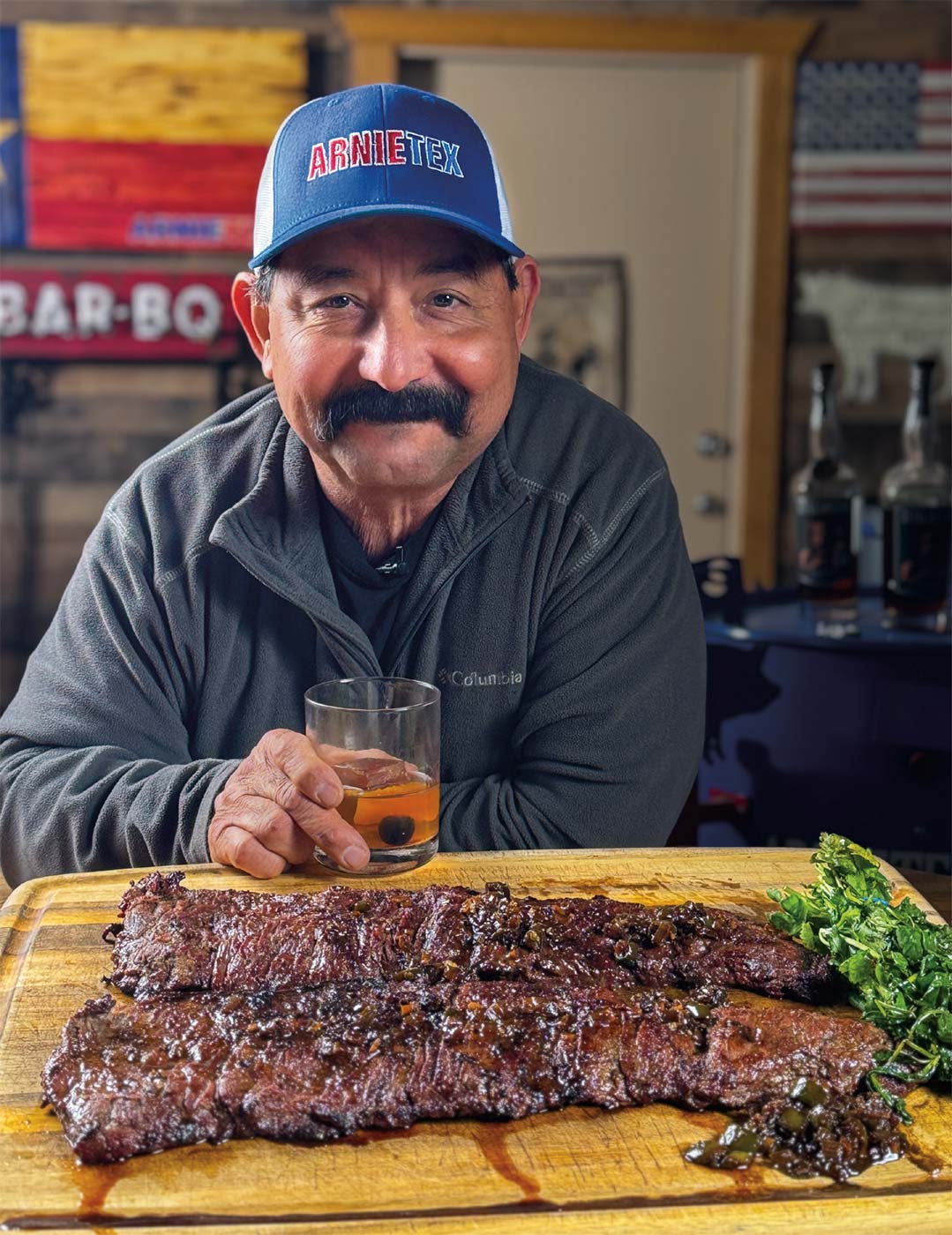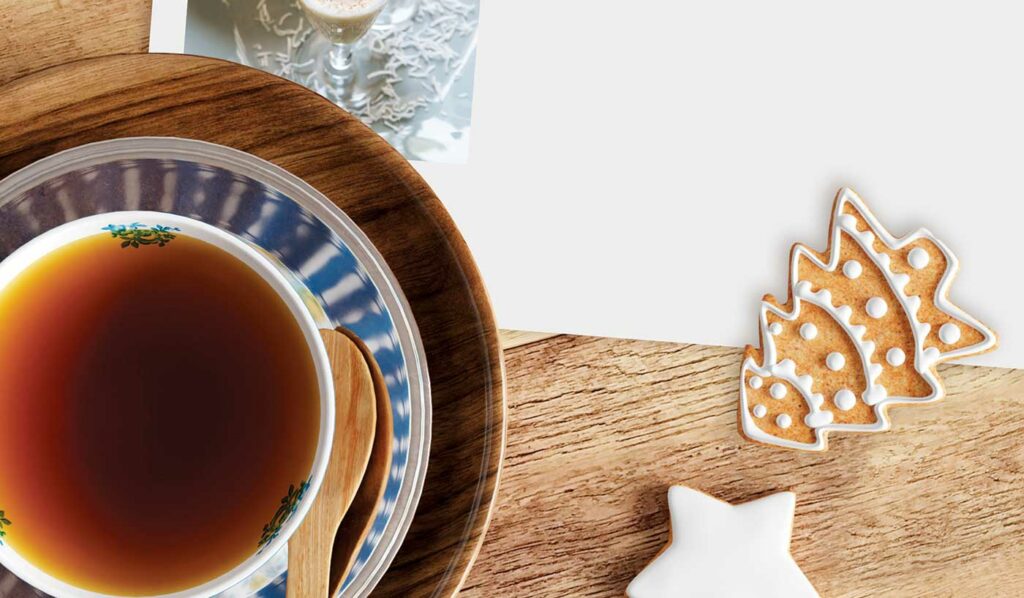
An uncle of mine forever established himself as the eggnog king in our family. During our holiday gatherings, men rarely ventured into the kitchen. Even as a small child I remember how amused, delighted and slightly baffled I was to see him wearing my grandmother’s frilly red apron, madly cranking an old-fashioned rotary eggbeater, lost in the vision of his magical brew. He insisted on only using a certain brand of Irish whiskey that he brought with him in a plain brown paper sack.
He made a non-alcoholic batch for the kids, as his magical version was strictly for adults. The taste of nutmeg still takes me back to the image of little me kneeling on the seat of a wooden kitchen chair, elbows on the red checkered tablecloth, and my uncle ladling up another serving for my enameled tin cup.
Beverages are the center gemstone in the Christmas holiday’s crown of glories. Fond memories can be quietly shared over warm cups of ponche navideño, which is similar to European style mulled wine or cider, it is chock full of fruit flavors and warming spices. As well as rompope, the Spanish version of eggnog, this curious name evolved from “Rum Pope,” a traditional milk-based beverage honoring the white robes of the Catholic Pope. Having a drink with friends and family is more central to the holidays than turkey or tamales. Although store bought beer and wine dominate the scene at most gatherings, we are most nostalgic about holiday home brews.
In the Americas, we may attribute a certain beverage to distinct countries: coquito, Puerto Rico’s most famous Christmas libation is made with sweet coconut cream and plenty of Puerto Rican Rum. But remember that Christmas, Hanukah and the concept of January 1 as the beginning of a New Year came from Europe through Spanish colonialists. Prior to the arrival of Columbus, the tribes of the Americas had their own calendars and rituals that were not based on Judeo-Christian beliefs. Therefore, the majority of holiday traditions in Latin America are derived from what the conquistadores brought from Spain.
If the Spanish colonists didn’t have the ingredients they craved from the Old World, they made do with what they found in the New World. Later, when farms, ranches and plantations were established, the ingredients most plentiful, such as sugar cane, coffee and coconuts which became the basis for a new traditional holiday grog.
Several of the recipes below featured in this article are milk based. Even though traditional recipes include favorite flavors, many popular historical recipes are derived from the ingredients that were available at the time. Monasteries established in the Americas were allowed to grow grapes for sacramental wine, but the vineyards were very small. Early wine and beer production in the New World was limited. So if you wanted a festive Christmas beverage, within a wine-scarce Spanish New World colony, during the cold, fruitless winter month of December, then milk, eggs and other pantry staples like cinnamon and sugar were combined for a festive drink.
These days, non-cooks might be looking for a reason to avoid the kitchen chaos. Disappearing to create a special beverage for the day is certainly a valid excuse. Even a simple cup of Mexican hot chocolate can inspire nostalgic memories. Thankfully, most holiday beverage recipes are quite easy and are preferably made in advance.
Dive into your family cabinets and look for those old holiday punch sets or hot toddy cups. Just like holiday sweaters and that old tinsel ornament that has been on the tree forever, traditions can be a little kitschy but always comforting. It’s time to bring the holiday cocktail back to life!
